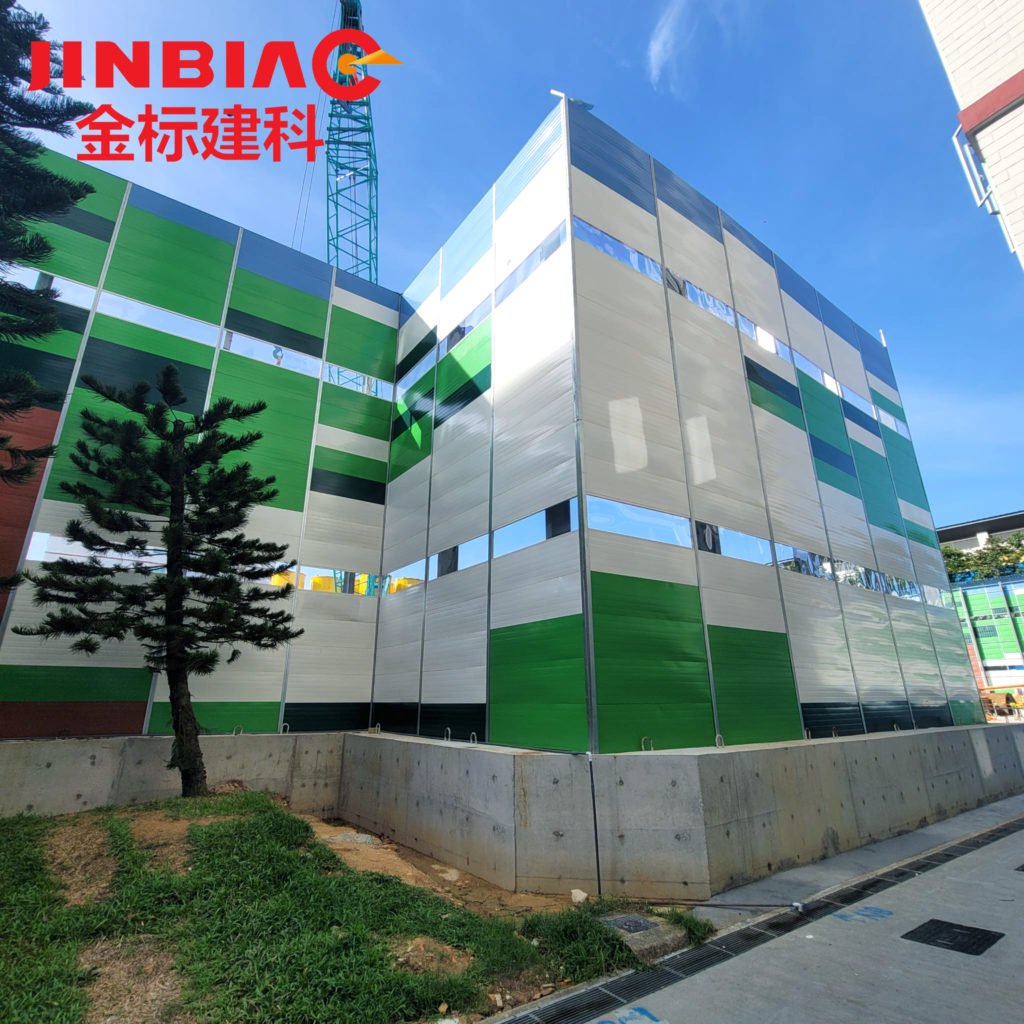
Noise pollution is a major concern in construction sites, and one of the most effective ways to mitigate it is through the use of noise barriers. These noise barrier construciton are designed to reduce the amount of noise that escapes from a construction site, protecting nearby residents from the loud and often disruptive sounds of heavy machinery, power tools, and other equipment.
Noise barrier construction come in a variety of shapes and sizes, and can be made from a range of materials including concrete, steel, and wood. They are typically placed around the perimeter of a construction site, creating a physical barrier that helps to absorb or deflect sound waves. In addition to protecting nearby residents, noise barriers can also help to improve working conditions for construction workers, reducing the risk of hearing damage and other health problems associated with prolonged exposure to loud noise.
Understanding Noise Barriers
Noise barriers are an essential component of construction sites, designed to reduce noise pollution and protect workers from harmful noise levels. In this section, we will explore the different types of noise barriers and materials used in their construction.
Types of Noise Barriers
There are several types of noise barriers used in construction sites, each with its unique features and advantages. The most common types of noise barriers include:
- Absorptive Noise Barriers Construction: These barriers are designed to absorb sound waves, converting them into heat energy. They are made of porous materials such as fibreglass and mineral wool, which trap sound waves and prevent them from reflecting back into the environment.
- Reflective Noise Barriers: These barriers are made of dense materials such as concrete, steel, and masonry. They reflect sound waves back towards the source, reducing the amount of noise that reaches the surrounding environment.
- Combination Noise Barriers: These barriers combine both absorptive and reflective properties to provide maximum noise reduction. They are typically made of a combination of porous and dense materials.
Materials Used in Noise Barrier Constructions
The materials used in noise barriers are critical in determining their effectiveness. Some of the most commonly used materials include:
- Concrete: Concrete is a popular material for reflective noise barriers due to its dense and heavy properties.
- Steel: Steel is another commonly used material for reflective noise barriers. It is durable, weather-resistant, and has a long lifespan.
- Fibreglass: Fibreglass is a popular material for absorptive noise barriers due to its excellent sound-absorbing properties.
- Mineral Wool: Mineral wool is another popular material for absorptive noise barriers. It is made from natural materials such as rock and slag, making it an eco-friendly option.
Noise Barriers in Construction Sites
Importance of Noise Barriers
Construction sites are often associated with loud and disruptive noise levels that can cause harm to workers and nearby residents. Noise barriers are structures designed to reduce the amount of noise produced by construction activities and are an essential component of any construction project. Noise barriers can be made of various materials such as concrete, wood, metal or plastic, and can be designed to fit the specific needs of the construction site.
Noise barriers are important in construction sites as they help to reduce the risk of hearing loss and other health problems caused by excessive noise exposure. In addition, noise barriers can help to improve the quality of life for nearby residents by reducing the amount of noise pollution in the area. This can lead to a more peaceful and comfortable living environment, which can have a positive impact on the mental and physical well-being of individuals.
Implementation and Challenges
Implementing noise barriers in construction sites can be challenging due to the unique nature of each site. Factors such as the size and shape of the site, the type of construction activities taking place, and the proximity to nearby residents all need to be considered when designing and installing noise barrier construction.
One of the main challenges of implementing noise barriers is the cost. Depending on the size and type of the barrier, the cost can be significant. However, the benefits of noise barriers in terms of worker safety and improved quality of life for nearby residents make them a worthwhile investment for construction companies.
Another challenge is the maintenance of noise barriers. Over time, noise barriers can become damaged or worn, which can reduce their effectiveness. Regular inspections and maintenance are necessary to ensure that noise barriers continue to provide the desired level of noise reduction.
In conclusion, noise barriers play a vital role in construction sites by helping to reduce noise pollution and protect the health and well-being of workers and nearby residents. While there are challenges associated with implementing and maintaining noise barriers, the benefits they provide make them an essential component of any construction project.
Hebei Jinbiao is a leading company in Noise Barrier products and Fencing products in Singapore. We guarantee to provide you with the most high-quality Sound Barrier and Fencing products along with our dedicated assistance. Do not hesitate to contact us. We are looking forward to helping you solve your noise issues, safety issues and protecting you from noise pollution as well as ensuring your safety.
